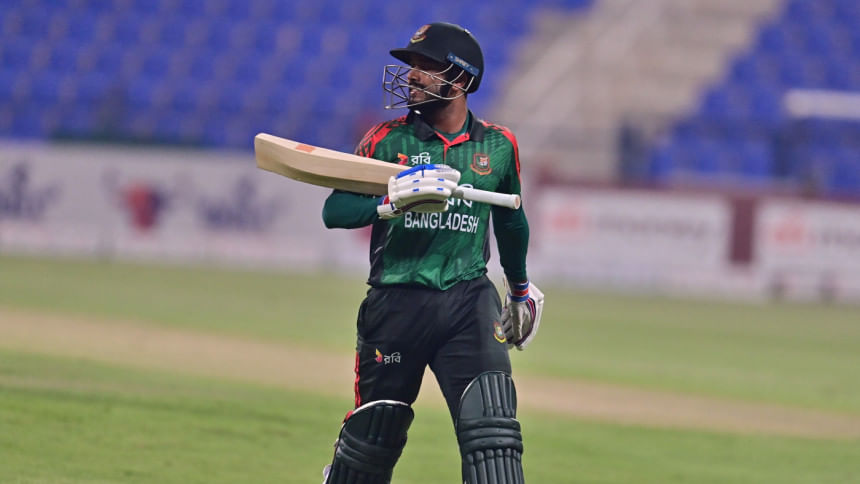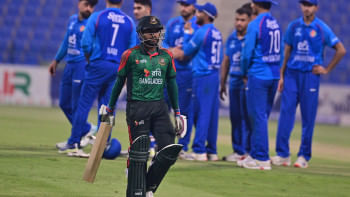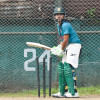The inflation of Bangladesh’s run drought

If there ever was an award in cricket for stating the obvious after a defeat, Bangladesh ODI captain Mehidy Hasan Miraz would be up for it for the reasoning he provided following the loss against Afghanistan in Abu Dhabi on Wednesday.
"We lost 40 runs on this wicket… if we could get 260 plus, it would definitely be better," said Miraz at the post-match ceremony, explaining why his side suffered a five-wicket defeat.
To be fair to Miraz, ruing not scoring enough runs is a tried and tested excuse for Bangladesh captains as many of his predecessors have used it numerous times. The only difference is the number of runs.
Earlier, that figure used to hover around the 15-20 runs mark, but now it has jumped to 40, an inflation that could be likened to the recent surge of gold prices in the country.
However obvious his reasoning was, it wasn't off the mark. Batting first, the Tigers could not put up a decent total, getting rolled over for a mere 221 in 48.5 overs.
The bowling attack did well to make the match somewhat competitive but overall, Bangladesh was the second-best team on the field throughout the game.
It was Bangladesh's ninth defeat in their last 10 ODIs, a clear indication of how far the Tigers have fallen in their once preferred format. And the bulk of the blame for this downfall lies on the batting department.
In the six ODIs Miraz and Co. have played this year so far, they have batted out their 50 overs only once, against New Zealand in Rawalpindi in the ICC Champions Trophy, and even in that game they had lost nine wickets.
They have been bowled out in their last four ODIs and they were similarly bundled out for four straight matches in 2022-2023.
Prior to that, the last time they had been all-out in four or more ODIs on the trot was back in 2008 -- twice against Pakistan and thrice against Australia, all away fixtures.
The batters who the team depended on 2024, have lost their rhythm. Skipper Miraz, who averaged 38.12 in eight innings last year, averages 19.16 in six outing this year.
Former captain Najmul Hossain Shanto's average has fallen from 75.15 to a mere 19.33 while opener Tanzid Hasan Tamim's average has gone down from 33.42 to 24.16.
Jaker Ali, who averaged 50.33 at a brisk strike rate of 111.85, has had his average knocked down to 37.50 while his strike rate has tumbled to 69.44.
Amidst all the slumps, Tawhid Hridoy's average has improved, going up from 30 to 44.33, but his slow scoring rate of 70.37 has stagnated the innings in the middle overs.
The top-order is not setting a solid base in most games, the middle-order is providing some runs but at a snail's pace and the lower order is not sticking around long enough to make a difference, leaving the tail-enders to fend for themselves in the death overs.
The poor form of batters is concerning, but the dearth of options to replace them is more alarming.
The management brought in the in-form Saif Hassan for the first ODI as a probable solution and he made 26 on debut. But when a side is betting on the form of a debutant to turn their fortunes, it can't be a surprise that after the game, their captain would rue not have enough runs.

 For all latest news, follow The Daily Star's Google News channel.
For all latest news, follow The Daily Star's Google News channel. 









Comments